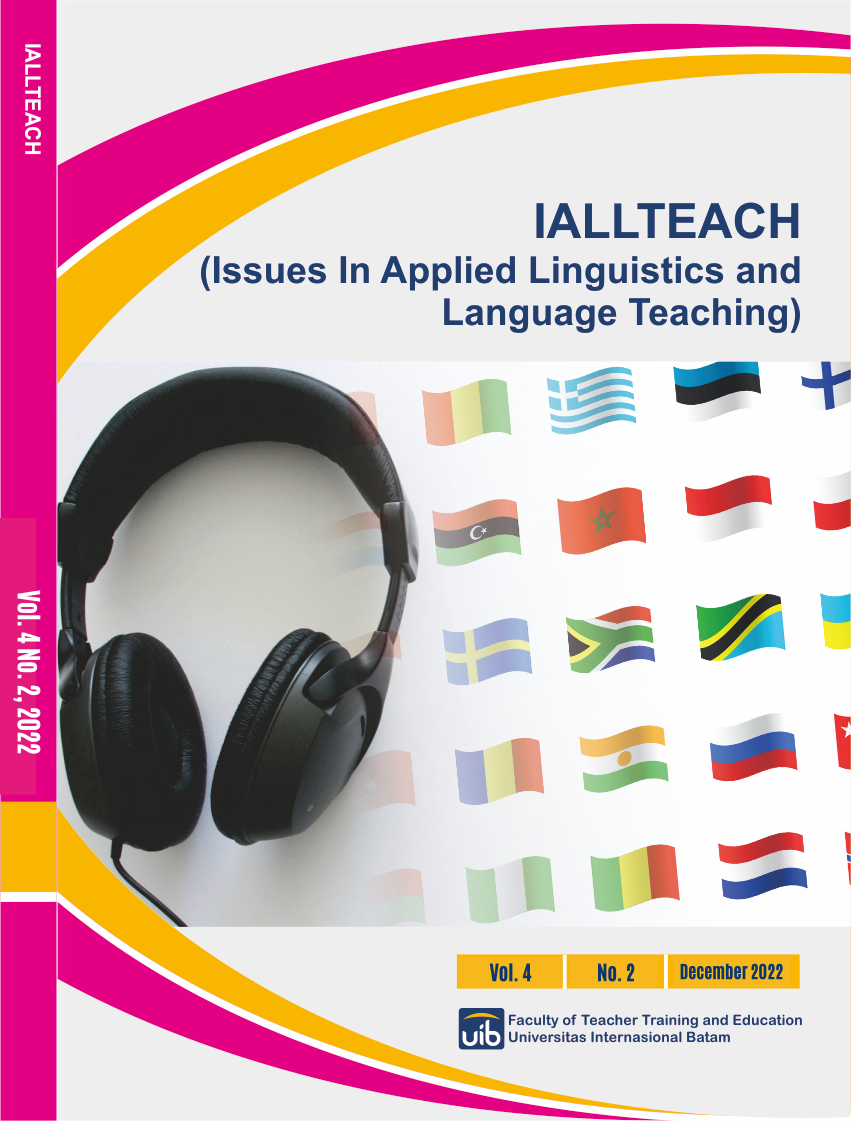Language Input, Learning Environment, and Motivation of Successful Indonesian EFL
DOI:
https://doi.org/10.37253/iallteach.v5i1.7757Keywords:
language input, learning environment, motivation, second language acquisitionAbstract
Second language acquisition is the process of learning the second language after an individual's first language has been established. The successful second language learner is affected by many factors. Three significant Second Language Acquisition (SLA) factors are Language Input, Learning environment, and motivation. This descriptive qualitative research aims to analyze the three significant components of SLA of two successful EFL undergraduate students, as evidenced by their advanced TOIEC scores and academic transcript demonstrating great achievement in English. This research shows that the language inputs of the two participants come from both inside and outside the classroom. The learning environment experienced by the participants included all three types of SLA learning environments: physical, psychological, and academic. Moreover, both participants have instrumental motivation, followed by intrinsic and extrinsic motivations
Downloads
References
Baroto, M. A. (2017). The Effects of Language Input, Learning Environment, and Motivation Toward Second Language Acquisition. Let, 1-11.
Bahrani, T. and Nekoueizadeh, M. (2014). The Role Of Input In Second Language Acquisition. Journal of Advances in Linguistics, Vol 1, No.1.
Carrió-Pastor, M. L. and Mestre, E. M. M. (2014). Motivation in Second Language Acquisition. Procedia - Social and Behavioral Sciences, 240-244.
Dhanapala, R. M. (2021). The Effect of Learning Environment On Academic Performance From Students' Perspective. Global Scientific Journals, 1528-1534.
Gass, S. M. (2021). Input, Interaction, and Output. Second Language Acquisition, 275-325.
Kiatkheeree, P. (2018). Learning Environment for Second Language Acquisition: Through the Eyes of English Teachers in Thailand. International Journal of Information and Education Technology, 391-395.
Mahadi, T. S. and Jafari, S. M. (2012). Motivation, Its Types, and Its Impacts in Language Learning. International Journal of Business and Social Science, 230-235.
Maharsi, I. (2016). How Input Influences Second Language Acquisition. Journal of English and Education, 45-53.
Masyhur. (2016). Influence of Motivation and Language Learning. Proceedings of the Fourth International Seminar on English Language and Teaching (ISELT-4), 88-104.
Nguyen, H. C. (2019 vol 06). Motivation in Learning English Language: a case Study at Vietnam National University, Hanoi. The European Journal of Educational Sciences, 49-65.
Nugroho, A., Zamzami, M. R. A., & Ukhrowiyah, N. F. (2020). Language input, learning environment, and motivation of a successful EFL learner. Journal on English as a Foreign Language (JEFL), 10(1), 46-69. https://doi.org/10.23971/jefl.v10i1.1511
Savielle-Troike, M. ( 2012). Introducing Second Language Acquisition. the United States of America: Cambridge University Press, New York.
Gass, S. M. and Selinker, L. (2008). Second Language Acquisition: An Introductory Course. New York : Routledge.
Ortega, L. (2013). Understanding Second language acquisition. New York: Routledge.
Zareian, G. and Jodaei, H. (2015). Motivation in Second Language Acquisition: A State of the Art Article. International J. Soc. Sci. & Education, 2223-4934.




.png)






